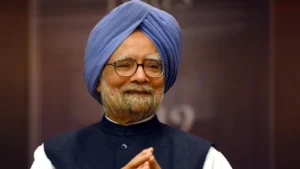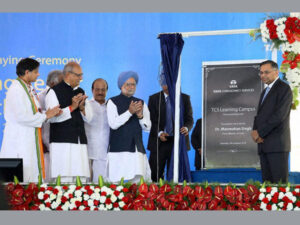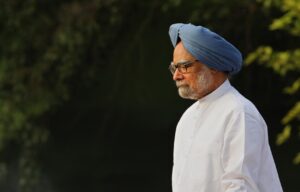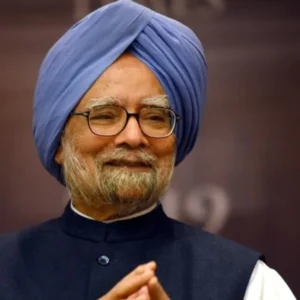Why Dr. Manmohan Singh deserves the Nobel Prize in economics.
Why Dr. Manmohan Singh deserves the Nobel Prize in economics.
Manmohan Singh, born on September 26, 1932, in Gah, Punjab (now in Pakistan), is an Indian economist, academic, and politician who served as the 13th Prime Minister of India from 2004 to 2014. His life is a testament to perseverance, dedication, and intellectual prowess.

In 1972, Singh was chief economic adviser in the Ministry of Finance, and in 1976 he was secretary in the Finance Ministry. In 1980–1982 he was at the Planning Commission, and in 1982, he was appointed governor of the Reserve Bank of India under then finance minister Pranab Mukherjee and held the post until 1985.
Why Dr. Manmohan Singh deserves the Nobel Prize in economics.
In 1992, a sprightly Sikh gentleman swiftly climbed the steps of the podium at a law conference in the central hall of the Ashok Hotel, New Delhi. For one hour, without a scrap of paper, he lucidly explained the complexities of India’s liberalization process. He painstakingly forewarned the ecstatic audience, that in order to sustain growth and drive up the investments — especially the foreign investors— it was necessary “to create an environment facilitating growth”. The erudite speaker fully in the grip of the subject, was Dr. Manmohan Singh, the then Finance Minister of India, who was swiftly maneuvering India out of its worst financial crisis.

Just the previous year, in 1991, India headed by Prime Minister Chandra Shekhar was on the edge of the precipice of an ignominious sovereign default. India’s international trade balance was in a hopeless deficit. Its external debt had doubled from $ 35 billion to $ 69 billion in 1991. India was running out of money, and time. It had less than $6 billion in foreign exchange reserves – just enough to meet around two weeks of the country’s imports. In May that year, the State Bank of India sold 20 tonnes of gold to the Union Bank of Switzerland to raise around $200 million.
Singh’s journey to becoming a significant figure in Indian politics is marked by his exceptional academic achievements and a distinguished career in economics. He obtained his bachelor’s and master’s degrees from Punjab University, later earning a doctorate from the University of Oxford, where he was a member of Nuffield College.
He began his career in academia, serving as a professor of international trade at the Delhi School of Economics and later as the Chief Economic Adviser to the Government of India in the late 1970s. His economic expertise led to several significant positions, including the Governor of the Reserve Bank of India from 1982 to 1985 and the Deputy Chairman of the Planning Commission from 1985 to 1987.
Manmohan Singh’s most notable contribution came as the Finance Minister of India from 1991 to 1996 under the leadership of Prime Minister Narasimha Rao. During this time, he implemented crucial economic reforms that liberalized India’s economy, dismantling the License Raj and opening up the country to globalization. His policies helped India move from a closed, controlled economy to a more market-oriented one, spurring economic growth, foreign investment, and modernization.

After the 1991 elections, the Indian National Congress and the UPA assumed office. The then Prime Minister Narasimha Rao requested I.G. Patel, the just retired Director of the London School of Economics to become India’s finance minister. The latter declined the offer. Instead, he recommended his most outstanding protégé, Dr. Manmohan Singh to pull the country out of the economic morass.
Dr. Manmohan Singh came to India as an uprooted child during the partition. Perhaps, the hardships faced by him gave him the impetus to stand first throughout his sterling academic career in economics. He got his bachelor’s and master’s degrees in 1952 and 1954. He went on to complete his Economics Tripos at the University of Cambridge under the tutelage of two of the foremost and hugely influential Keynesian economists, Joan Robinson and Nicholas Kaldor. Both Robinson and Kaldor were a fervent advocates of how governments should combine development with social equity and make capitalism work in the larger public interest. These two formative influences would dramatically reflect in Dr. Singh’s approach while spearheading the Indian economy into a full throttle growth engine.
Read More:- अब्दुल कलाम की सफलता की कहानी (2023) | apj abdul kalam success story in hindi
Dr. Singh’s eternal quest for higher learning would take him back to the University of Oxford for his DPhil. His 1962 successful doctoral thesis would form the basis for his book “India’s Export Trends and Prospects for Self-Sustained Growth”.
Dr. Singh as Finance Minister (1991-1996), inherited a devastating balance of payments situation and a double digit inflation. He took two economically sound, but politically volatile decisions. The rupee was devalued twice in July 1991, first by around 9 per cent, followed by another devaluation of 11 per cent. With a devalued rupee, our exports became cheaper, a necessary course correction for our worsening trade imbalance. As an emergency measure to tide over our current account deficit, the Reserve Bank of India pledged its gold holdings with the Bank of England raising around $400 million to stave off the current account deficit.
What followed was a series of reforms of the Indian economy which he aptly called “reforms with a human face.” The prelude was the dismantling of the License Raj with the introduction of the Industrial Policy, 1991. Deep structural reforms were made with the implementation of tradeable exim scrips, ending the stranglehold of the Monopolies and Restrictive Trade Practices Act making it easier to restructure businesses by facilitating mergers and amalgamations, ending the monopoly of the state owned companies over imports, and automatic approval of foreign direct investment in many sectors. All these reforms required not just the political courage and economic foresight but the confidence that he could create an economic environment to enable Indian business and industry to thrive in the new international regime of globalised trade.
Singh’s technocratic approach and pivotal role in transforming India’s economy earned him immense respect and recognition. He was appointed as Prime Minister in 2004, leading the United Progressive Alliance (UPA) government. His tenure witnessed significant economic growth, poverty alleviation programs, and initiatives in infrastructure development and social welfare.

Despite facing challenges during his tenure, Singh’s leadership focused on inclusive growth, rural development, and efforts to reduce social disparities. He played a crucial role in furthering India’s global relations and advocating for economic cooperation on the international stage.
Manmohan Singh’s success story is one of academic brilliance, professionalism, and dedicated service to the nation. His contributions to India’s economic reform and subsequent leadership as Prime Minister have left an indelible mark on the country’s development trajectory and its position in the global economy. His legacy continues to shape economic policies and remains an inspiration for aspiring leaders and policymakers in India and beyond.

